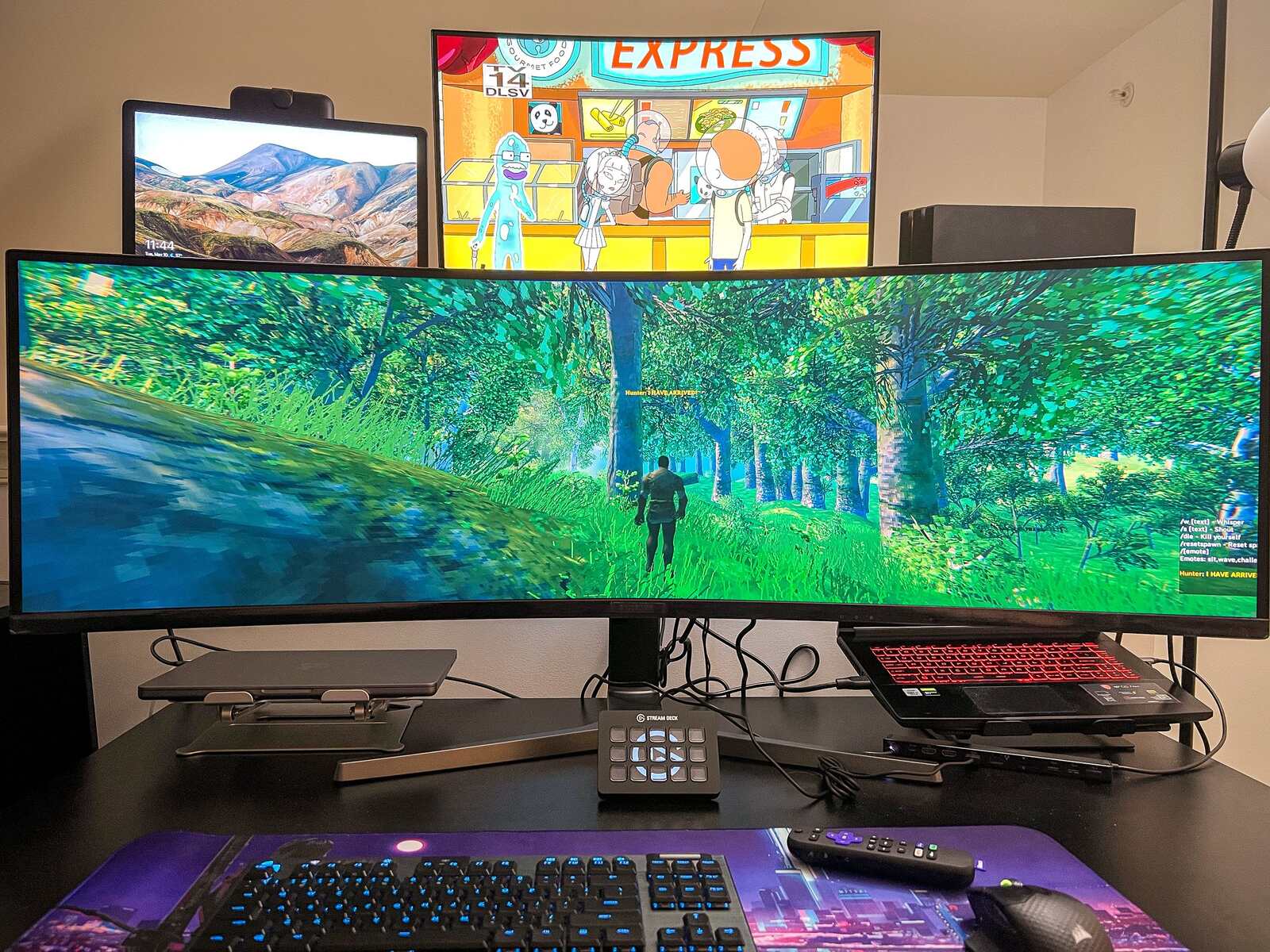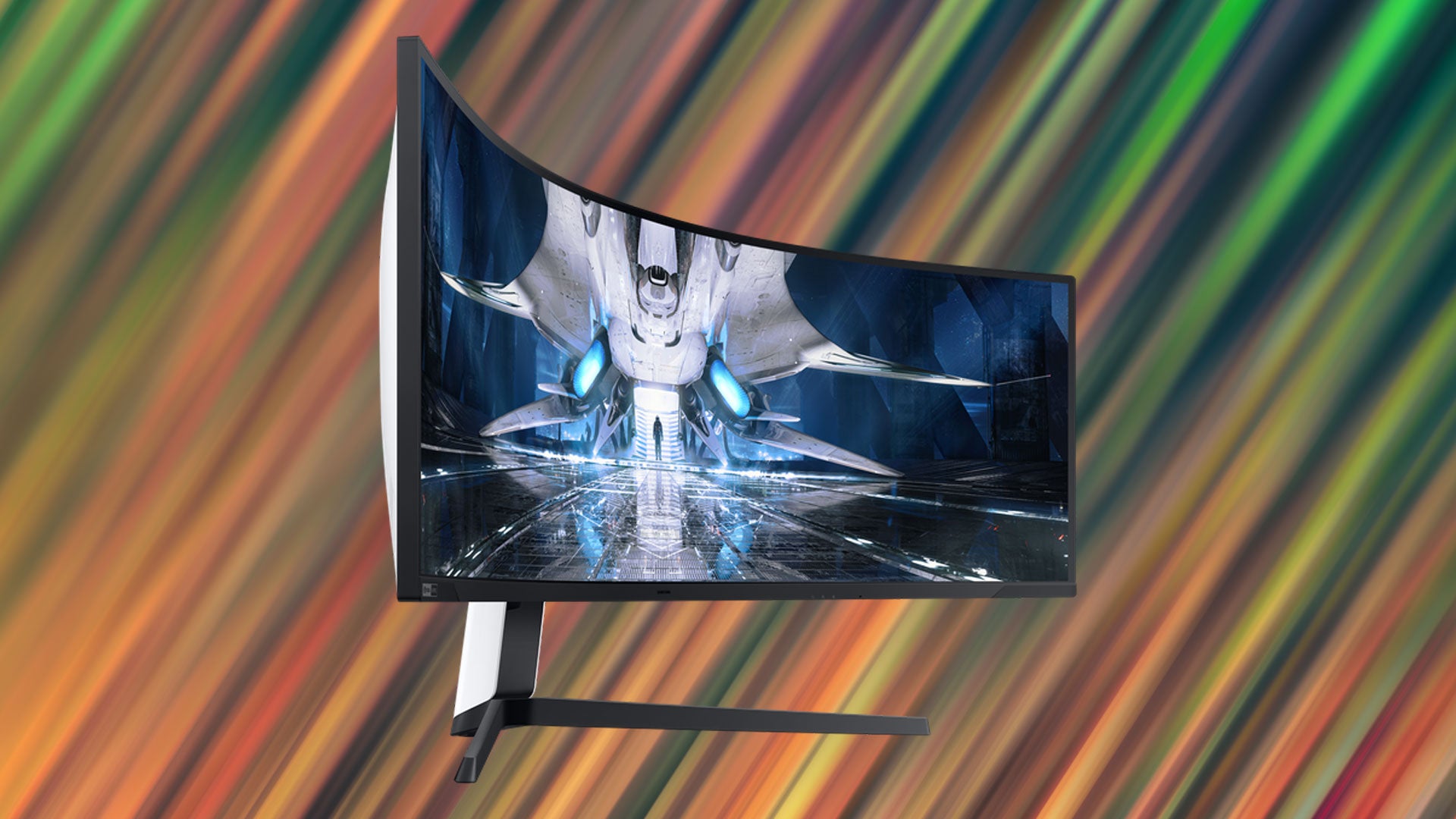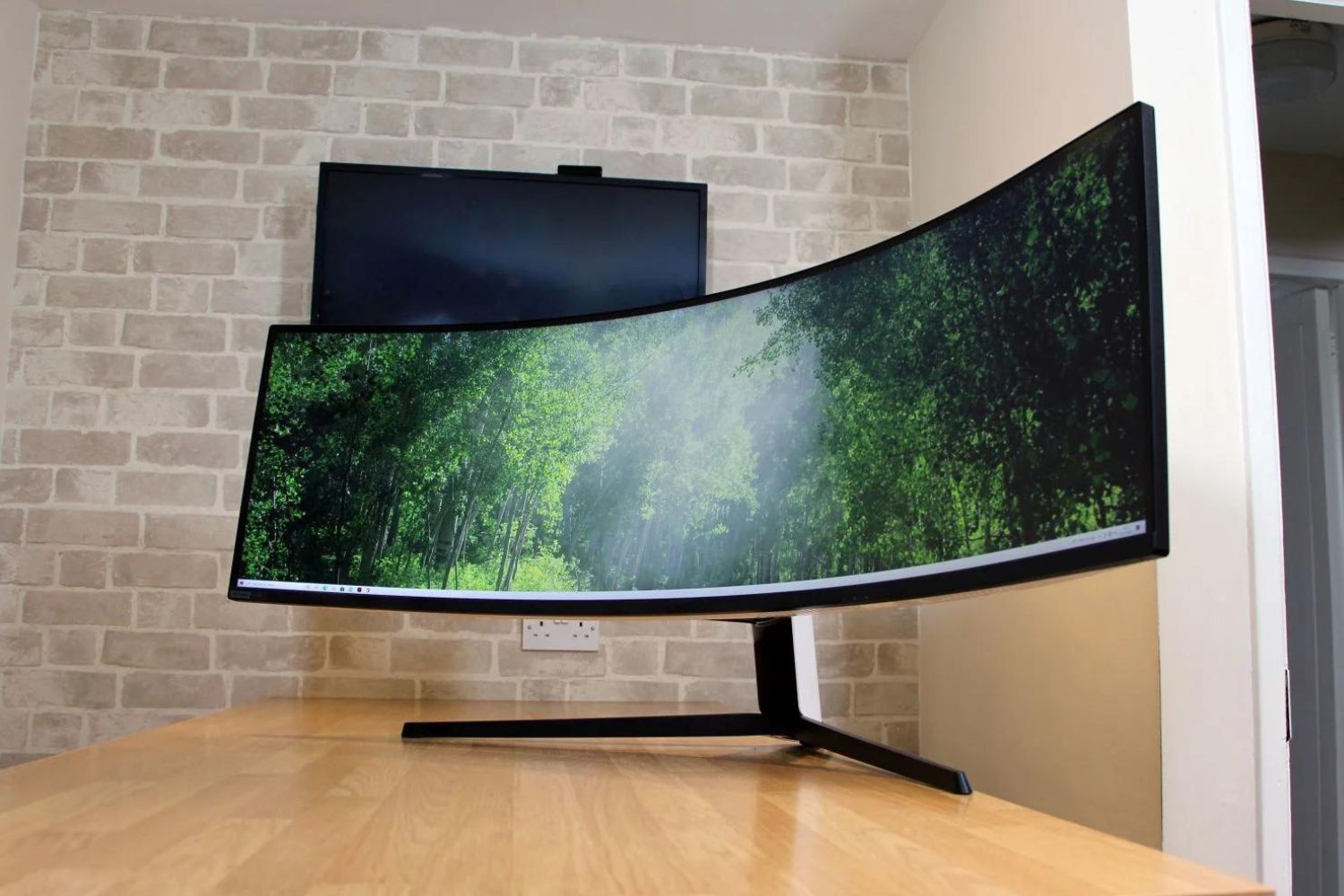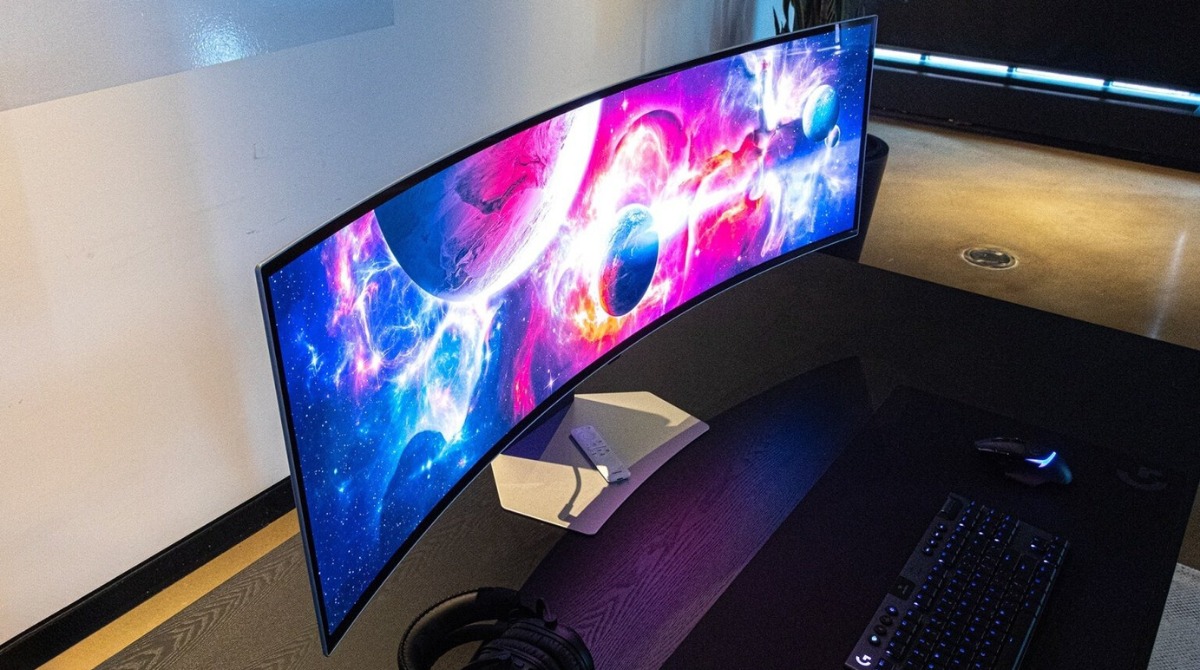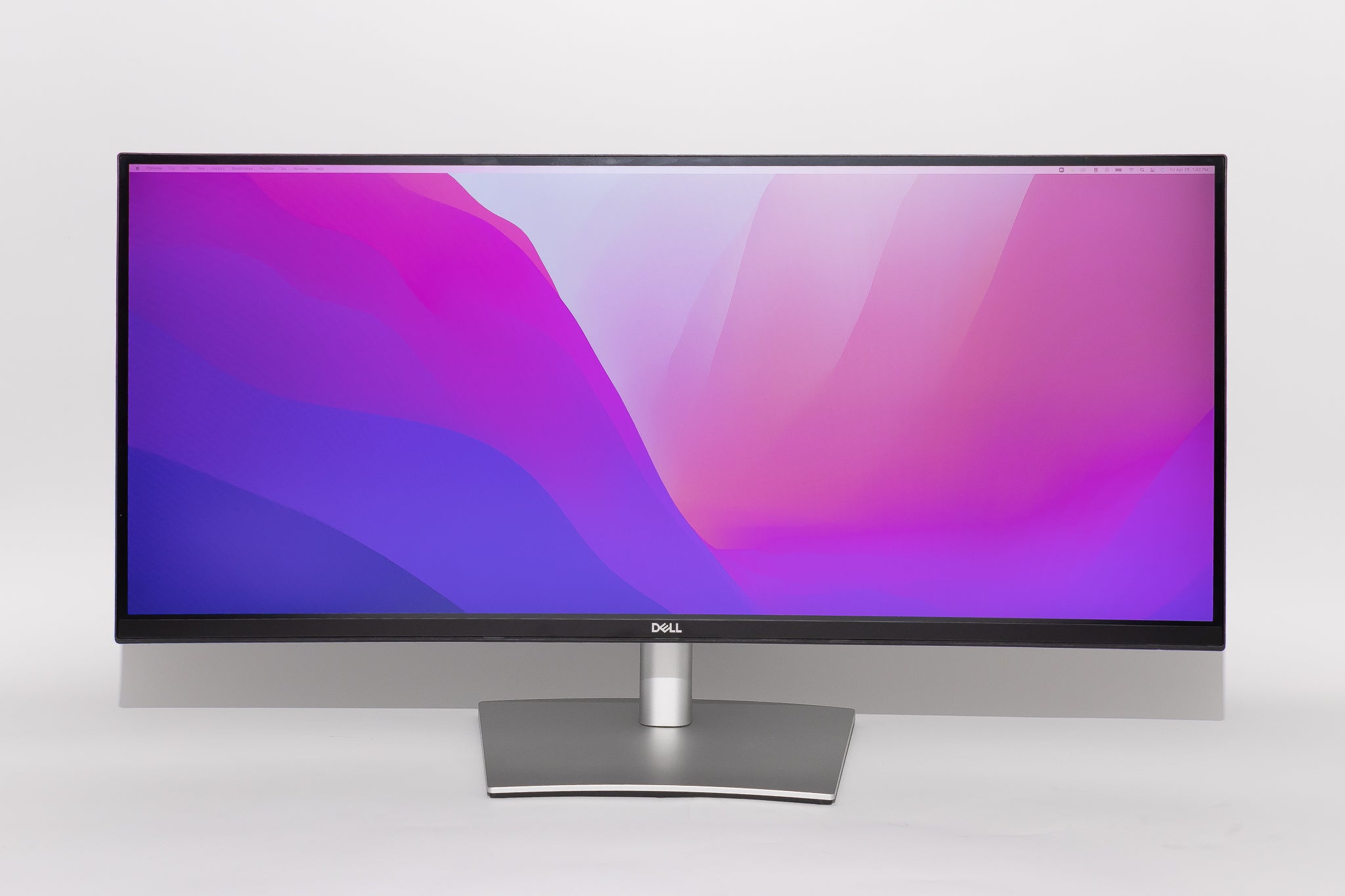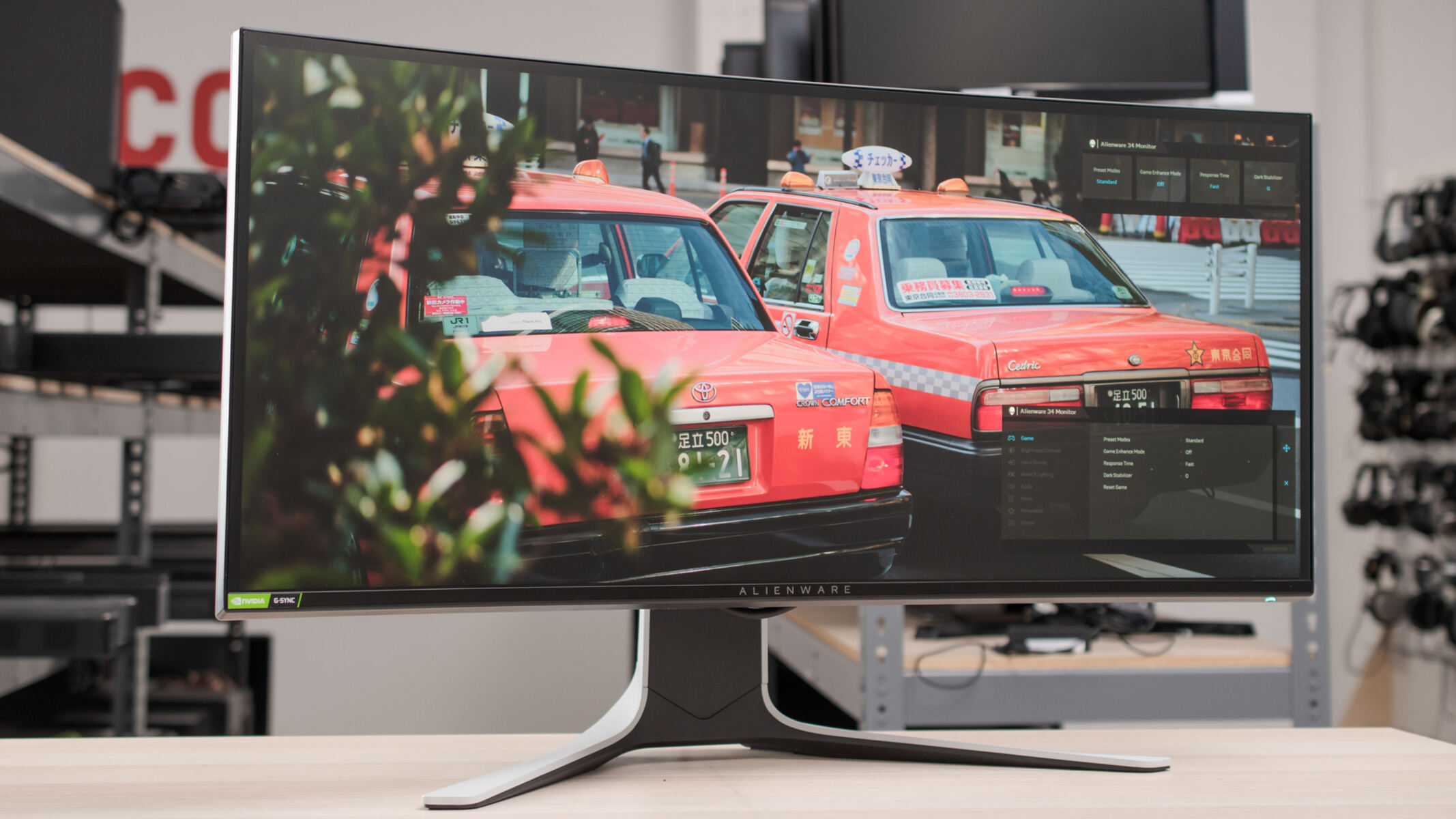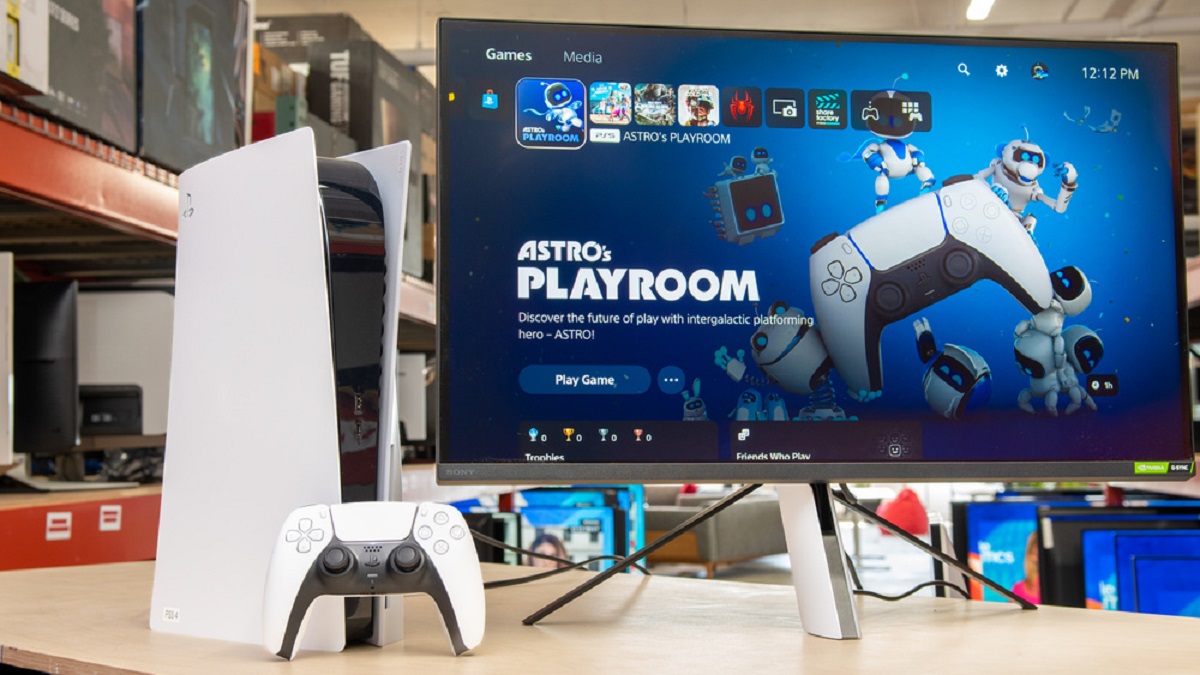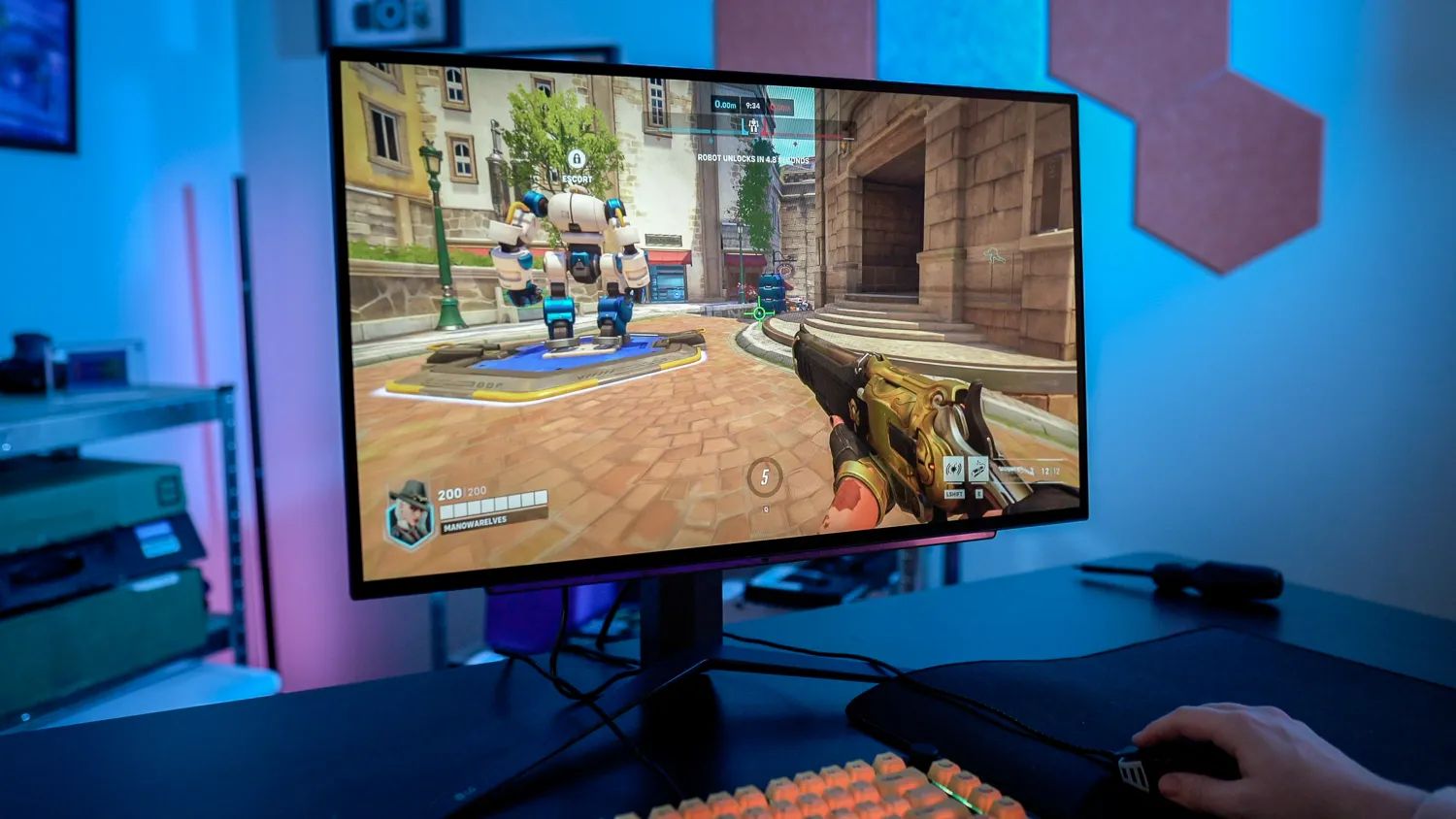Introduction
Curved gaming monitors have gained immense popularity among gamers in recent years. These monitors, with their gentle curvature, offer a more immersive gaming experience by wrapping the screen around your field of view. The curved design helps to create a sense of depth and allows for a wider viewing angle, enhancing your gaming experience.
One of the main benefits of curved gaming monitors is that they provide a more realistic and immersive gaming environment. The curved screen mimics the natural curvature of your eyes, resulting in a more uniform viewing experience. This helps to reduce eye strain and fatigue, allowing you to enjoy longer gaming sessions without discomfort.
Additionally, curved gaming monitors create a more captivating visual experience. The curved screen helps to draw your attention to the center of the display, making images and graphics appear larger and more vibrant. This can be especially beneficial for games with rich graphics and detailed scenery, as it enhances the overall visual quality.
Another advantage of curved gaming monitors is the improved viewing angles. Unlike flat monitors, curved monitors provide a wider field of view, allowing you to see more content without straining your eyes. This is particularly useful for multiplayer games or games with wide landscapes, as you can see more of the game world without needing to constantly pan the camera.
When it comes to choosing a curved gaming monitor, there are several factors to consider. The size of the monitor, the resolution, the refresh rate, and the curvature are all important factors to take into account. The size of the monitor will determine the amount of screen real estate you have for gaming, while the resolution will determine the level of detail and clarity in the visuals. The refresh rate is crucial for smooth and lag-free gameplay, while the curvature can affect the immersion and viewing experience.
In the following sections, we will explore these factors in more detail and provide you with a list of the best curved gaming monitors in the market. We will also compare their features and specifications to help you make an informed decision. Additionally, we will provide tips on how to set up and optimize your curved gaming monitor for the best gaming experience. So, let’s dive in and discover the exciting world of curved gaming monitors!
Benefits of Curved Gaming Monitors
Curved gaming monitors offer a range of benefits that can greatly enhance your gaming experience. Here are some of the key advantages:
- Immersive Gameplay: One of the primary benefits of curved gaming monitors is the immersive gameplay they provide. The curved design creates a wider field of view, enveloping you in the gaming world. This enhanced immersion makes you feel more connected to the action, allowing you to become fully engrossed in the game.
- Enhanced Visibility: The curvature of the screen helps to reduce distortion and improve visibility, especially in the corners. With a curved gaming monitor, you can easily see content on the edges of the screen without straining your neck or adjusting your position.
- Reduced Eye Strain: Curved gaming monitors help reduce eye strain by providing a more uniform viewing distance. The curved shape matches the natural curvature of your eyes, which eliminates the need for constant refocusing and reduces eye fatigue during extended gaming sessions.
- Improved Depth Perception: The gentle curve of the monitor enhances depth perception, making objects on the screen appear more three-dimensional. This improved sense of depth can be particularly beneficial for gaming genres that rely heavily on spatial awareness, such as first-person shooters and racing games.
- Better Focus on the Action: The curved design of gaming monitors helps to draw your attention to the center of the screen, where the action is happening. This focused viewing experience allows you to track movement more easily, spot enemies or obstacles quicker, and react faster in fast-paced games.
These are just a few of the benefits that curved gaming monitors offer. Whether you’re a casual gamer or a hardcore enthusiast, investing in a curved gaming monitor can greatly enhance your gaming experience and make every moment more enjoyable and immersive.
Factors to Consider when Choosing a Curved Gaming Monitor
When it comes to choosing a curved gaming monitor, there are several important factors to consider before making a purchase. These factors will help ensure that you select the monitor that best suits your gaming needs. Here are the key considerations:
- Curvature: The curvature of the monitor is an important factor to consider. Curved gaming monitors usually come in different curvature levels, often measured in terms of radius. A smaller curvature radius means a more pronounced curve, providing a more immersive experience. However, personal preference and the distance between you and the monitor should also be taken into account when deciding on the curvature.
- Size: The size of the monitor is another crucial factor to consider. It determines the amount of screen real estate you have for gaming. Larger monitors provide a more immersive experience, but they also require more desk space. Consider your available space and seating distance to choose the appropriate size for your gaming setup.
- Resolution: The resolution of the monitor determines the level of detail and clarity in the visuals. Higher resolutions, such as 1440p or 4K, offer sharper images and more precise details. However, keep in mind that higher resolutions require more powerful graphics processing units (GPUs) to maintain smooth gameplay.
- Refresh Rate: The refresh rate specifies how many times the monitor refreshes the image per second. A higher refresh rate, such as 144Hz or 240Hz, provides smoother motion and reduces motion blur, resulting in a more responsive gaming experience. Consider your graphics card capabilities to ensure it can match the monitor’s refresh rate.
- Panel Type: The panel type affects the color accuracy, contrast levels, and viewing angles of the monitor. The most common panel types for gaming monitors are TN (Twisted Nematic), VA (Vertical Alignment), and IPS (In-Plane Switching). Each has its advantages and disadvantages, so consider your priorities, such as color accuracy, response time, and viewing angles when choosing a panel type.
- Connectivity and Features: Check for the connectivity options available on the monitor, such as HDMI, DisplayPort, and USB ports. Additionally, consider the presence of features like adaptive sync technology (such as AMD FreeSync or NVIDIA G-Sync) for smoother gameplay and adjustable stands for ergonomic positioning.
By considering these factors, you can make an informed decision and select a curved gaming monitor that suits your preferences and gaming setup. Remember to prioritize the features that matter most to you and strike a balance between performance, budget, and compatibility with your gaming system.
Best Curved Gaming Monitors in the Market
Now that we have discussed the factors to consider when choosing a curved gaming monitor, let’s explore some of the top options available in the market:
- Asus ROG Swift PG279QZ: This 27-inch monitor offers a 1440p resolution, a high 165Hz refresh rate, and an IPS panel for excellent color accuracy and wide viewing angles. It also features NVIDIA G-Sync technology to eliminate screen tearing and stuttering.
- Alienware AW3418DW: With a 34-inch ultrawide curved display, a 1440p resolution, and a 120Hz refresh rate, this monitor provides an immersive gaming experience. It uses an IPS panel for vibrant colors and has NVIDIA G-Sync for smooth gameplay.
- MSI Optix MPG341CQR: This 34-inch monitor boasts a 1440p resolution, a fast 144Hz refresh rate, and a VA panel for deep blacks and high contrast. It features RGB lighting, a customizable OSD, and supports AMD FreeSync for tear-free gaming.
- LG 27GL850-B: With a 27-inch size, a 1440p Nano IPS panel, and a 144Hz refresh rate, this monitor delivers vibrant colors, wide viewing angles, and smooth performance. It supports both NVIDIA G-Sync and AMD FreeSync for adaptive sync compatibility.
- AOC CQ32G1: This 32-inch monitor offers a 1440p resolution, a 144Hz refresh rate, and a VA panel for deep blacks and high contrast. It features AMD FreeSync technology, an adjustable stand, and a curved design that enhances immersion.
These are just a few of the top curved gaming monitors available in the market. Each monitor offers different features, specifications, and price points, so consider your specific requirements and budget when making a decision. Reading reviews and comparing options can also help you find the best curved gaming monitor for your needs.
Comparison of Top Curved Gaming Monitors
To help you make a more informed decision, let’s compare some of the top curved gaming monitors mentioned earlier:
| Monitor | Size | Resolution | Refresh Rate | Panel Type | Sync Technology |
|---|---|---|---|---|---|
| Asus ROG Swift PG279QZ | 27-inch | 1440p | 165Hz | IPS | NVIDIA G-Sync |
| Alienware AW3418DW | 34-inch | 1440p | 120Hz | IPS | NVIDIA G-Sync |
| MSI Optix MPG341CQR | 34-inch | 1440p | 144Hz | VA | AMD FreeSync |
| LG 27GL850-B | 27-inch | 1440p | 144Hz | Nano IPS | NVIDIA G-Sync, AMD FreeSync |
| AOC CQ32G1 | 32-inch | 1440p | 144Hz | VA | AMD FreeSync |
As you can see, there are differences in size, resolution, refresh rate, panel type, and sync technology across these monitors. Consider your priorities and gaming needs when comparing these specifications.
If you prioritize a higher refresh rate for smoother gameplay, monitors like the Asus ROG Swift PG279QZ or the LG 27GL850-B would be excellent choices with their 165Hz and 144Hz refresh rates, respectively. However, if you prefer a larger immersive display, the Alienware AW3418DW or the MSI Optix MPG341CQR and their 34-inch sizes offer a more expansive viewing experience.
The panel type is also an essential consideration. IPS panels like those found in the Asus and Alienware monitors provide accurate colors and wide viewing angles, while VA panels, like the ones in the MSI and AOC monitors, offer deep blacks and high contrast ratios. Deciding which panel type suits your gaming preferences is crucial. Additionally, considering the supported sync technologies is important for tear-free gaming. The Asus, Alienware, and LG monitors support both NVIDIA G-Sync and AMD FreeSync, providing adaptive sync compatibility.
Compare these specifications and features to find the curved gaming monitor that aligns with your budget and gaming requirements. It’s essential to prioritize aspects that matter most to you to ensure an optimal and enjoyable gaming experience.
How to Set Up and Optimize a Curved Gaming Monitor
Setting up and optimizing your curved gaming monitor correctly is crucial to getting the best gaming experience possible. Here are some steps to consider:
- Positioning: Place the curved gaming monitor at a comfortable distance from your seating position. Ideally, it should be tilted slightly towards you, with the center of the screen at eye level. Adjust the monitor’s height, tilt, and swivel settings to achieve the most comfortable and ergonomic position.
- Calibration: Calibrate the monitor’s display settings to optimize color accuracy and contrast. Most monitors offer preset modes such as “Game” or “Cinema,” but it’s best to manually adjust color temperature, brightness, and contrast settings to your preferences. You can also use calibration tools or software for more accurate color calibration.
- Resolution and Refresh Rate: Ensure that your graphics card is set to output the native resolution of your monitor. Additionally, adjust the refresh rate in your graphics card settings to match the monitor’s rated refresh rate, if needed. This will provide you with the smoothest and most responsive gaming experience.
- Adaptive Sync: If your monitor supports adaptive sync technologies like AMD FreeSync or NVIDIA G-Sync, enable them in your graphics card settings. This feature reduces screen tearing and stuttering by synchronizing the refresh rate of the monitor with the graphics card’s output. It can greatly enhance the overall smoothness of your gaming experience.
- Game Mode and Overdrive: Many curved gaming monitors come with a “Game” or “Gaming” mode. This mode optimizes the monitor’s settings for gaming, reducing input lag and enhancing visual performance. Additionally, enabling the monitor’s overdrive feature can improve pixel response time and reduce motion blur.
- Ambient Lighting: Consider the lighting conditions in your gaming area. Adjust the monitor’s brightness and contrast settings to achieve optimal visibility while avoiding eye strain. If you have ambient lighting behind the monitor, ensure that it is not causing unwanted glare or reflections on the screen.
By following these steps, you can set up and optimize your curved gaming monitor for the best possible gaming experience. Remember to regularly clean the monitor’s screen, update graphics card drivers, and stay informed about any firmware updates for your monitor to ensure optimal performance and longevity.
Frequently Asked Questions about Curved Gaming Monitors
Here are some common questions and answers regarding curved gaming monitors:
- Are curved gaming monitors only beneficial for gaming?
- Do curved gaming monitors have a noticeable effect on gameplay?
- Do curved gaming monitors cause distortion?
- What is the ideal curvature for a gaming monitor?
- Are curved gaming monitors more expensive than flat monitors?
- Do curved gaming monitors cause eye strain?
- Can I use a curved gaming monitor for professional work?
- Are curved gaming monitors compatible with all graphics cards?
No, curved gaming monitors can also enhance other multimedia experiences such as watching movies or videos. The curved design provides a more immersive and engaging viewing experience.
Yes, the curved design of gaming monitors can make a noticeable difference in gameplay. It improves the sense of depth, immersion, and peripheral vision, giving you a more encompassing gaming experience.
No, if you choose a high-quality curved gaming monitor, distortion should not be an issue. Most modern curved monitors are designed to minimize distortion and provide a uniform viewing experience.
There is no one-size-fits-all answer to this question as the ideal curvature depends on personal preference and the viewing distance from the monitor. Generally, a curvature radius of 1500R to 1800R is recommended for immersive gaming experiences.
Curved gaming monitors tend to have a slightly higher price tag than their flat counterparts due to the manufacturing process and additional features. However, with advancements in technology, curved monitors have become more affordable in recent years.
No, curved gaming monitors are designed to reduce eye strain. The curvature matches the natural shape of your eyes, resulting in a more comfortable and uniform viewing experience, reducing the need for constant refocusing.
Yes, curved gaming monitors can be used for professional work such as graphic design, video editing, or programming. The enhanced immersion and wider field of view can improve productivity and provide a more immersive workspace.
Yes, curved gaming monitors are compatible with all graphics cards that support their resolution and refresh rate. However, to take full advantage of adaptive sync technologies like AMD FreeSync or NVIDIA G-Sync, ensure that your graphics card is compatible with the monitor’s sync technology.
These are some of the frequently asked questions regarding curved gaming monitors. If you have any specific concerns or inquiries, it’s recommended to consult the manufacturer’s documentation or reach out to customer support for further assistance.
Conclusion
Curved gaming monitors offer a range of benefits that can greatly enhance your gaming experience. From the immersive gameplay and enhanced visibility to the reduced eye strain and improved depth perception, these monitors create a more engaging and captivating environment for gamers.
When choosing a curved gaming monitor, consider factors such as curvature, size, resolution, refresh rate, panel type, and connectivity options. The right combination of these features will ensure an optimal gaming experience that suits your preferences and gaming setup.
Some of the top curved gaming monitors in the market include the Asus ROG Swift PG279QZ, Alienware AW3418DW, MSI Optix MPG341CQR, LG 27GL850-B, and AOC CQ32G1. Each monitor offers unique features and specifications, so compare them based on size, resolution, refresh rate, panel type, and sync technology to find the best fit for your gaming needs.
Once you have selected a curved gaming monitor, remember to properly set it up and optimize its settings. Position the monitor correctly, calibrate the display, adjust the resolution and refresh rate, enable adaptive sync, and take into account ambient lighting conditions for the best gaming experience.
Whether you’re a casual gamer or a dedicated enthusiast, investing in a curved gaming monitor can greatly enhance your gaming experience and provide you with hours of immersive gameplay. With the right knowledge and understanding of what to look for, you can find the perfect curved gaming monitor that will take your gaming adventures to the next level.







